
|
 |
Spa Business Handbook - Spa Foresight™ 2014

Trends

|
|
| Spa Foresight™ 2014
|

What’s coming down the track for the global spa and wellness industries?
Spa Business examines the trends, technologies and strategies which will shape the future
|
|
|

|
LONELINESS

BAD FOR HEALTH

The number of people living alone has increased by 80 per cent in the last 15 years, rising to 277 million globally in 2011 according to Euromonitor. While ageing populations have contributed to statistics, the ‘cult of the individual’ has also intensified and more people of all ages are choosing to live alone.
Figures are the highest in Sweden, where 47 per cent of households only have one person living in them, this is followed by the UK (34 per cent) and Japan (31 per cent).
Loneliness has dramatic ramifications for health – it can interfere with sleep, raise blood pressure, decrease immunity, increase depression, lower overall wellbeing and stimulate the production of cortisol. Lonely people are twice as likely to die prematurely warn doctors.
With the power of touch being one of the most effective antidotes to isolation, spas are ideal hubs to tackle loneliness. Facilities could offer community outreach programmes targeting the most vulnerable and provide educational sessions on how to deal with it.
|

|
GLOBAL HOTSPOTS

OIL, GAS – AND SOLAR

Identifying global hotspots very early on in the process enables operators to unlock new markets for growth, by acquiring land and property and forming local partnerships to underpin business expansion.
Spa Foresight™ is tracking emerging economies where wealth is based on the production of energy – specifically oil and gas in the short-term – but longer-term we expect this to broaden out to include access to solar power, as this option becomes more competitive.
The wealth generated by the harvesting of these natural resources is creating exciting opportunities for development in emerging nations such as Kazakhstan, Nigeria, Algeria, Angola and Azerbaijan, which have vast oil reserves and Uzbekistan and Turkmenistan which have gas.
Exciting longer-term opportunities will emerge for the development of spa businesses once better infrastructure is in place and this oil and gas wealth combines with more stable political situations.
And as solar gains market share, we’ll track the winners in that too. These are just as likely to be in the developed world. For example, in Australia solar has reached a tipping point where it’s cheaper than coal.
| |


|

Baku: follow the oil to find growth |
|

|
GROWING INTEREST

EDIBLE ENVIRONMENTS

Going to the spa to get your hands in the soil and do some gardening may seem an unlikely idea, but we think growing and spa are natural bedfellows and predict this trend will take off.
Growing is the new rock and roll, with horticulture degrees at full capacity, foraging becoming a career choice and communities being built around brands like Modern Farmer, the New York-based magazine which is attracting a crowd who love to grow and eat.
In the restaurant sector, chefs now view the soil as the starting point for their craft, with some investing in their own farms, while new resort Kittitian Hills, which opens in St Kitts in 2014, will have an edible golf course.
Edible parks and edible ponds are also becoming more popular around the world in response to the drive to make communities more local, natural and sustainable – the message is, if you can make it edible then do so.
We expect to see spas embracing the Grower movement in a multitude of ways, such as adding rooftop gardens and opening up space for growing.
Working in the gardens and with the soil – with the added benefits associated with earthing – could be an enjoyable part of the spa experience. This is especially the case for those who live in cities. Being able to graze on the landscape while enjoying the outdoors is a nourishing and healing pleasure that fits perfectly with the spa ethos and chimes with the growing interest in food as medicine.
| |


|
| PHOTO © shutterstock/Ekaterina Pokrovskaya |

Being able to graze on the landscape while enjoying the outdoors is a nourishing and healing pleasure |
|

|
PLAYING WITH FOOD

TASTE SENSATION

Living Food – a concept from biology, and robotics student Minsu Kim – proposes the addition of live organisms to fine dining. She foresees a time where we move beyond the oyster to where “a vegetable plays with your fork, while noodles tickle your tongue as you eat them,” and plates of food become living, pulsating things.
The colour, shape, weight and size of cutlery and crockery also affects taste. Researchers from Oxford University in the UK have found that food tastes saltier if eaten with a knife and feels denser and more expensive if a light plastic spoon is used. Drinks served in cold-coloured glasses seem to quench the thirst more.
|

|
THERE’S A THOUGHT

NEUROPLASTICITY

A increasing number of studies in the field of neuroplasticity show that the brain is not the static organ we once believed it was. It has the ability to change, heal and renew itself, which can result in physical as well as mental changes.
Scientists of pyschoneuroimmunology, another relatively new field, have also found receptors for our emotional neurotransmitters (usually only located in the brain) in the cells of our immune system. They’ve concluded that there’s a direct link between the mind and body.
To get optimum physical results, future therapists will start to look at how they can work with the mind. They’ll address how guests are thinking and feeling internally to help treat their body.
|

|
STRIKING A BALANCE

CELLULAR HEALTH

We anticipate increasing awareness of the importance of cellular health – something few people have any knowledge of.
Many of the systems which run our bodies at a cellular level work through tensions between opposites and the balance between them determines our health.
For example, the health of the gut – which underpins the immune system – relies on the balance between fungi and bacteria. If either dominate, our health is undermined: consume too much sugar or yeast and fungus flourishes, which leads to disorders such as candida, athletes foot and thrush.
The cellular pump, which keeps our cells clean and our blood pressure healthy, relies on the correct balance between sodium and potassium in the body. Get the balance wrong and the result will be disease and high blood pressure.
A wide range of health factors are reliant on balance – exercise and rest, acid and alkali, oxygen and carbon dioxide. Good balance means excellent cellular health and a greater likelihood of freedom from disease.
We expect to see a more widespread recognition, in both the allopathic and complementary health fields, of the importance of good cellular health, its role in the fundamental underpinning of wellbeing and of its importance as the ultimate tool in the prevention of disease.
This subtle element of health is unseen and rarely researched, so education to raise awareness will be the first step.
| |


|
| PHOTO © shutterstock/Warren Goldswain |

Good cellular health is the foundation of wellbeing, but few people are aware of this |
|

|
AUTOMATION

ROBOT THERAPISTS

The ability to perceive the minds of others is emerging in robots and the field continues to develop and evolve.
We predict the spa and wellness industry will eventually employ robot therapists to carry out some, if not all work in spas.
The world of work is changing fast – researchers at the University of Oxford UK’s Oxford Martin school have just published a report, The Future of Employment, which says 45 per cent of jobs currently done by humans will be computerised in 20 years. The coming of robot workers will overlap with this, as businesses strive to reduce labour costs and increase profitability.
Robots are already capable of scanning and appraising materials and interacting with them appropriately, so some of the elements of both hardware and software which are required for the leap into delivering a treatment are already in existence. Unlike humans, robots can be programmed (and reprogrammed) quickly to follow highly technical and complex procedures – imagine the comprehensive spa menus and levels of customisation which would be possible if treatments were delivered by robot instead of human? Some may prefer to be treated by robot, as it removes the embarrassment they feel at being naked in front of another person.
Robots are capable of making connections between data and basing actions on the latest research findings because they can upload, process and analyse vast quantities of information to reach a diagnosis.
As an example, IBM pitted its most powerful computer – Watson – against world leading medics in a diagnostic test for cancer and Watson won hands down. IBM says 20 per cent of all medical diagnoses in the US are erroneous, leading to incorrect treatment. We imagine a time when healing modalities are prescribed and delivered effectively by robot.
- More about IBM Watson: http://lei.sr?a=4b0F8 and http://lei.sr?a=k7v7
- Oxford Martin report: http://lei.sr?a=r3F0V
| |


|
| PHOTO © shutterstock/Kiselev Andrey Valerevich |

The advent of robot therapists will enable the delivery of highly technical treatments |
|

|
A NEW PERSPECTIVE

A NEW PERSPECTIVE WAR ZONES

Although we’re living in the most peaceful century in history, the last seven years has shown a notable deterioration in levels of peace, according to The Global Peace Index from The Institute for Economics and Peace (IEP). The index has 22 indicators that gauge the absence of fear or violence.
IEP found that since 2008, 111 countries have deteriorated in levels of peace, while only 51 have increased and the world’s become less peaceful due to a rise in terrorist activity, the number of conflicts fought and people displaced. The global economic impact of violence reached US$9.8tn last year.
We believe there’s a case for the spa industry to track and respond to war zones for a number of important reasons.
Firstly, there are business opportunities in rebuilding, as conflicts draw to a close and major infrastructure projects and investment recommence. It’s a long-term play, but can prove lucrative. Former war zones such as Vietnam are now booming as spa and resort destinations.
Secondly, where spa developments are underway or established, businesses can be threatened by civil unrest, so operators, developers and investors need a systematic way of assessing and responding to this risk to protect assets.
Thirdly, and most importantly, the healing ethos of spa and wholesome physical touch can make a huge difference in areas where conflict has reduced this part of life.
Overall, tracking war zones gives a clearer indication of where threats and opportunities lie for the spa industry.
? IEP report: http://lei.sr?a=y8Y6G
|

|
THE NEW SUPERFOODS

FATS & CARBS

Misinformation about the role fats and carbohydrates play in the body has led to many excluding them from their diet.
However, we expect to see the reputation of these foods rehabilitated, as people become better educated in holistic nutrition.
In his book Fats that Heal, Fats that Kill, Udo Erasmus makes the case for the value of eating and absorbing the correct fatty acids in the diet to prevent and reverse a wide range of serious health disorders, from cancer to type 2 diabetes and arthritis. Meanwhile, carbohydrates are necessary for a range of functions, from the maintenance of nerve health to the production of testosterone.
Spas are perfectly placed to educate customers on these issues and to include the correct fats and carbs on the menu.
| |


|
| PHOTO © shutterstock/Natasha Breen |

Far from being harmful, we expect fats and carbs to be viewed as the new superfoods |
|

|
3D PRINTING

PRODUCT WILL BE ‘PRINTED’ ON-SITE

The therapist goes to the cupboard to get another bottle of body scrub to do a treatment and finds someone took the last one. A disaster? Today perhaps, but not for much longer. Soon it will be possible to 3D print more to order on-site.
The implications of this for the spa industry are huge and will change both the economics of spa operations and the relationship between suppliers and operators.
3D printing products on-site will mean they’re fresher, so less preservatives will be needed, shipping costs will be lower and storage and packaging will be reduced.
Product companies which gear up for this hugely disruptive trend will have the advantage of controlling the intellectual property rights to their own formulations. But those that sit back and do nothing will find that – as with the drug industry – there will be competitors who adapt their formulae and create generic versions.
The power of the brand and the control which suppliers exert over the infrastructure will be key. If a product house creates a 3D printing option for clients whereby they have a licence to print a branded product for use in treatments, then they will retain market share, but if this isn’t done, then they could potentially lose their business.
| |


|
| PHOTO © shutterstock/Apollofoto |

Threat and opportunity: suppliers of spa products must be aware that 3D printing will massively disrupt their businesses |
| |
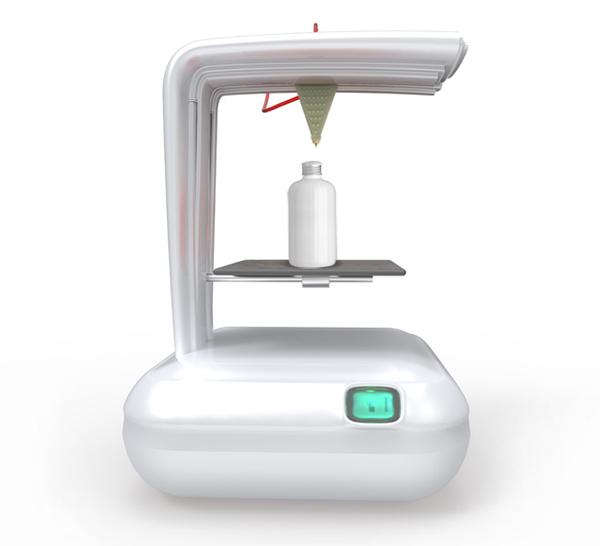

|
| Threat and opportunity: suppliers of spa products must be aware that 3D printing will massively disrupt their businesses |
| |
|

|
PREDICTING PURCHASING

WEATHER CHANNEL

In the US, the Weather Channel has rebranded as the Weather Co and the Atlanta-based business has more than 75 years’ of weather data which it’s using to predict not only the weather, but when people are more likely to buy certain goods. We think big data like this will increasingly be used to help operators understand customer behaviour and how to optimise income.
|

|
WELCOMING GUESTS

NO FRONT DESK

Cloud software enables operators to remove the front desk and instead, welcome guests with a tablet computer and a personal greeting at check-in, rather than being behind a desk.
Spas and hotels are experimenting with tablet check-ins, while some restaurants are trialling app payments which allow customers to avoid a wait for their bill: they can just pay and go once they’ve finished their meal.
|

|
THE OLYMPIC EFFECT

SPA BOOM IN JAPAN

Tokyo’s hospitality industry will gain much pace in the run up to the 2020 Olympics in anticipation of tourists – London’s 2012 Games attracted 698,000 visitors according to official figures. Expect to see much focus on onsen (hot spring facilities) which are a highlight of the Japanese spa industry.
|

|
ACCESS TO EXPERTS

VIRTUAL TRAINER

Given their ability to generate value from underutilised space, virtual exercise classes are likely to be picked up by spas going forwards. They’re already very popular with leading fitness operators such as GoodLife Fitness, Virgin Active and Anytime Fitness.
Systems consist of a screen, projector and a computer connected to the internet that stores and runs classes and installation starts at US$3,000 (€2,210, £1,790), plus a monthly licence fee. Most systems allow operators to either pre-schedule classes or let customers choose sessions on-demand, or offer a combination of the two. Platform providers include Wexer Virtual, Fitness On Request and Fitness On Demand.
They enable facilities to offer world-class instruction and a huge variety of trainers. Gaiam, for example, provides yoga sessions by Rodney Yee. Other major brands such as Les Mills and Zumba have also entered the virtual arena which suggests that it’s on the brink of rapid growth.
| |
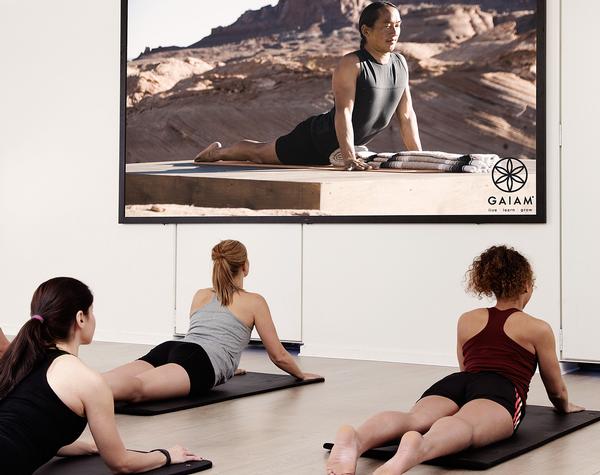

|

Gaiam’s virtual yoga gives access to world-class instruction by Rodney Yee |
|

|
LAWSUITS ON THE HORIZON

BAD PRODUCTS

Rub garlic on your feet and soon its delicate smell will make itself known on your breath – such is the amazing absorptive power of the skin.
With such a mainline into the circulatory and lymphatic systems, the skin is a miracle – an organ in its own right and hugely responsive, its role in good health cannot be underestimated.
But skin can’t discriminate between beneficial and harmful substances and it will absorb everything it’s exposed to – for good or ill – creams, oils, treatments and potions included.
The spa industry is a highly competitive market, with global product houses fighting for market share and producing endless streams of new and ever more ‘efficacious’ product lines which claim to reverse ageing and variously firm, brighten, whiten, lighten and rejuvenate the skin.
Where these products are ineffective, there’s less cause for concern, because this limits the potential for damage. However, where they have active ingredients, their use – especially when randomly combined – amounts to a giant experiment at the expense of the consumer and no one can accurately predict the outcome.
Ethical suppliers factor this into their R&D and ensure their products are harmless, but there are some who compromise for commercial gain and we expect health-related issues triggered by these product to lead to a backlash from consumers. We may even see lawsuits being brought by consumers as compensation for conditions related to product use.
| |
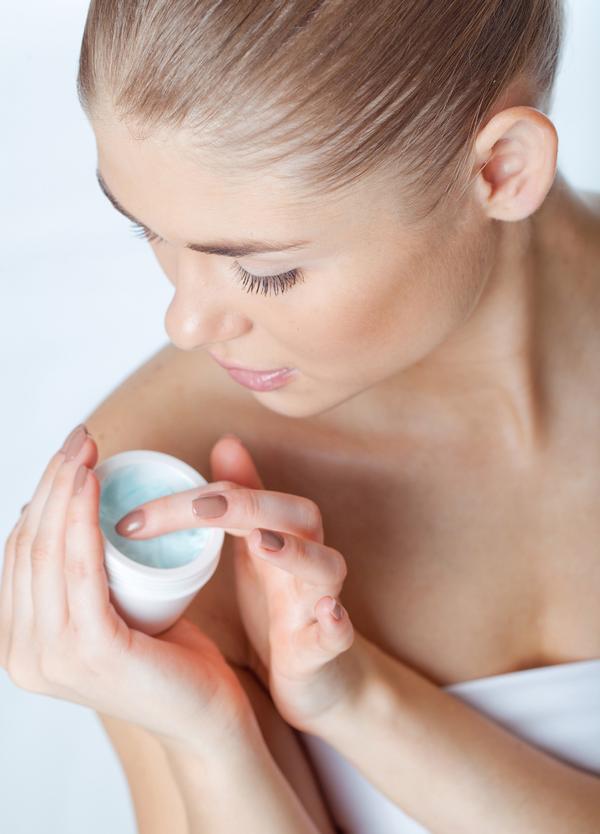

|
| PHOTO © shutterstock/Nina Buday |

The use and combining of products is a giant experiment with unknown outcomes and could lead to lawsuits if health problems occur as a result |
|

|
TOO MUCH OF A GOOD THING

OVER NOURISHMENT

Millions of people the world over take vitamin supplements for any number of reasons – to boost their health, give them better skin or even raise their sex drive. While some people may benefit from specific supplementation, scientists are warning that taking extra vitamins without supervision could be a waste of money and may even be harmful. High doses of vitamin A, for example, could be linked to osteoporosis.
|

|
SETTING THE RHYTHM

CIRCADIAN AWARE

Organising daily schedules around the body’s natural clocks – our circadian rhythms – can improve mental alertness and enhance the immune system. Yet when these rhythms are disrupted by work patterns or even artificial light, our inner clocks are thrown.
We see spas creating circadian friendly environments by installing ‘healthy lights’ which emit different spectrums of light. These spectrums mimic the wavelengths of natural daylight which our biological rhythms are in-synch with.
We also see spas becoming more mindful of the timing of treatments. Is there an optimum time to offer a more relaxing or energising massage? Many skin functions are circadian rhythmic – oil production is twice as high at noon than between 2-4pm and its temperature is higher in the evening. Of course, everyone has their own natural rhythm, but these guidelines could be used as a starting point to tailor facials.
|

|
SPECIALIST FITNESS

MICROGYMS

Microgyms – centres specialising in just one area of fitness – are taking the health club market by storm, creating a new breed of exerciser which spas can also target.
Stand-alone cycling studios are leading the way, but other formats – from functional training to group exercise – are gaining popularity. And research by Paul Bedford, a UK fitness retention expert, shows that people are becoming more targeted with each club they join – wanting a specific type of yoga, group cycling or equipment.
Savvy spa operators will monitor the microgym movement and emulate the experience by putting on themed workouts with special guest instructors to tap into this audience. They’ll base this on what’s popular with their own spa-goers, with specialised yoga being an obvious fit.
We also expect to see partnerships forming between microgym and spa owners.
| |
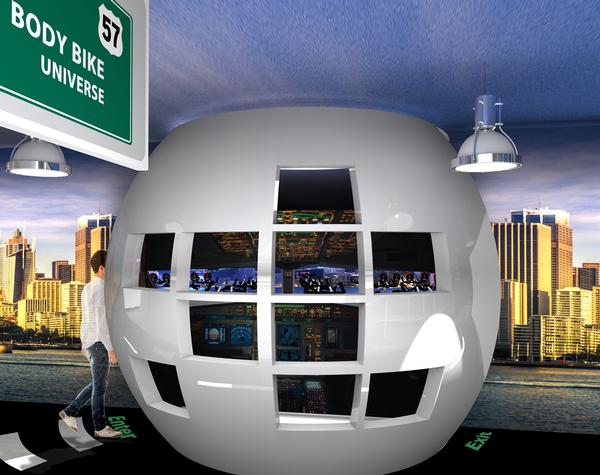

|

Microgyms, such as those by Body Bike are creating a new breed of exerciser who want specific experiences |
|

|
THE SECOND BRAIN

GUT HEALTH

A growing body of science is revealing just how essential our digestion is to overall physical and mental wellbeing.
The 9m long enteric nervous system, which runs from the oesophagus to the anal canal, is referred to as ‘the second brain’ because it contains around half a billion nerve endings – more than in the spinal cord. It not only controls digestion but exerts a powerful effect on hunger and appetite hormones like ghrelin and CCK, as well as immunity and mood. It also manufactures around 50 per cent of the feel-good hormones serotonin and dopamine.
The FX Mayr cure is a renowned treatment for digestion in Austria, but is less well known internationally. Its based on a restricted calorie, low starch regime, Epsom salts to cleanse the bowel and abdominal massage.
We predict extreme growth in the number of spas offering gut health programmes as research backs up its importance in underpinning wellness.
| |
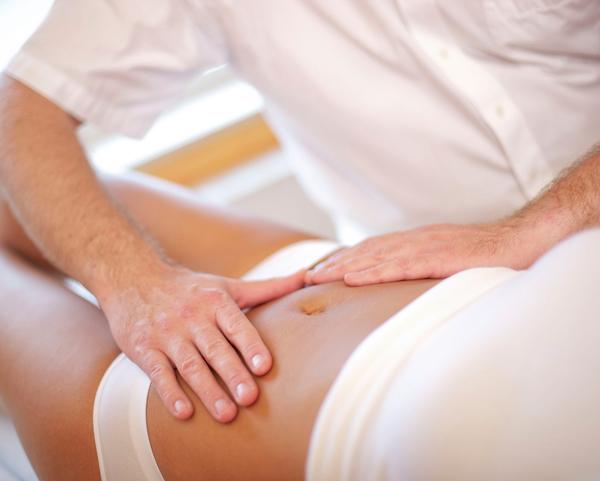

|
| PHOTO © shutterstock |

Spas will follow in the footsteps of The Original FX Mayr Health Center in Austria and focus on gut health |
|

|
THE BASICS ARE NOW A USP

CLEAR AIR AND WATER

Breathing clean air and drinking and bathing in clean water are three fundamentals of health, but for some who live in toxic places, there’s no respite from the assault of pollution.
Spas that offer access to clean air and water will find that this USP is increasingly sought by consumers and we foresee a new trend emerging around the provision of both, by either natural or artificial means.
Consumers will value the opportunity to take a healing break from invasive and unhealthy atmospheres.
We expect spas with access to clean air and water to devise healing programmes, while those located in polluted places, will have the opportunity to offer special rooms where guests can enjoy breathing clean air and bathing in pure water. This will extend to concepts such as sensory rooms with 360 degree-screens where it will be possible to simulate standing on a beach in a wood or lavender field.
| |
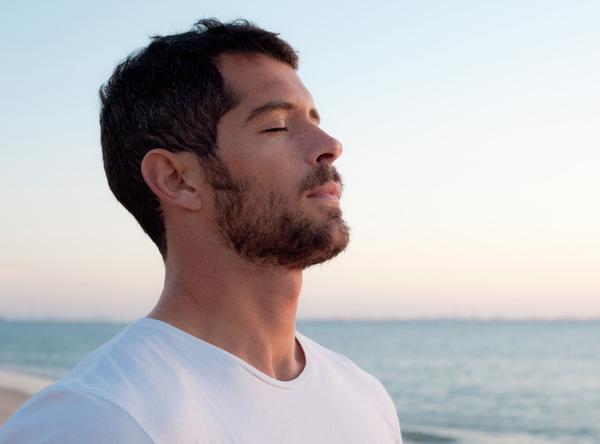

|
| PHOTO © shutterstock/Zai Aragon |

Consumers will pay for clean air |
|
|
|
| | | | | | | | | | | | | | | | | | | | |
